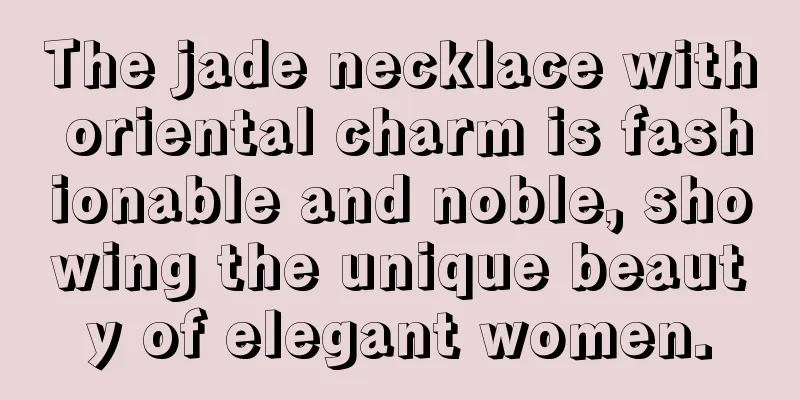How to judge the quality of jadeite?

|
From the late 20th century to the present, the concept of treasure collection in prosperous times has led to a growing craze for jadeite collection. Jadeite has gradually evolved from a piece of jewelry to embellish people's lives to a messenger that carries and spreads jade culture. Detecting the authenticity of jade and judging its quality have become the primary issues in jade collection. Myth 1: The older the jade, the better Many collectors are particular about collecting "ancient jade", but there is no distinction between "ancient" and "modern" jadeite collection. Jade was introduced to China during the Qing Dynasty. At that time, there were not many jade raw materials and the identification ability was poor, so the texture of jade that was older was relatively poor, and it was far less beautiful than the jade jewelry mined and produced in modern times. Myth 2: The ones that don’t change color are A-grade goods Some jadeite with good dyeing technology can maintain its bright color for up to 10 to 20 years. However, some red or yellow jade may change color if not properly stored, such as being placed in an environment with excessively high temperatures for a long time, or being soaked in acidic or alkaline chemicals. Myth 3: Green jade is good Emerald green jade is the best quality among A-grade jade, but not all jade is green. Some jade will form a bright "jade" color due to the infiltration of iron. If such jade has high transparency and good texture, it will also be popular in the market. Myth 4: The more complex the process, the better “Simplicity is beauty.” Many high-quality jades are often made into very simple bracelets or ring faces without any carving; while some jades with impurities or cracks are often carved into figures or scenes by skilled craftsmen to cover up their natural imperfections. Myth 5: The more uniform the green, the better In the market, you can often see some jadeite that is emerald green all over, with bright color and very even distribution. In fact, jadeite with extremely uniform color is either unaffordable or fake. The interior of jade is composed of a collection of granular minerals, so its green color is mostly distributed locally. There will be a boundary between green and non-green, and it is rarely consistent throughout. Myth 6: The rarer the item, the more valuable it is Natural minerals sometimes form very special patterns. For example, some minerals are arranged in shapes similar to animals or mountains and rivers. Some collectors often hype this kind of jade as a rare treasure. In fact, in addition to being rare, this kind of jade must conform to aesthetic principles and have good texture to be truly "valuable". fruit fcgc99 |
<<: Why does jade become greener the more you wear it?
>>: What are the seven qualities of jade?
Recommend
Why are jade bracelets so expensive? The whole process of raw stone processing tells you the answer
To polish a fine jade bracelet, you must have a p...
How to distinguish the authenticity of jadeite most easily
The general method of identifying fake jade is to...
From an inconspicuous jadeite raw stone, you can cut into yellow and green jadeite, a tri-color jade that is priceless!
Why did yellow and green become the darling of th...
When buying jadeite, you must not only choose the right one, but also look good.
As the saying goes, gold has a price but jade is ...
A man bought a jadeite stone worth tens of thousands of yuan and cut it into high ice flowers with one knife. The carved big brand is enviable
I believe that friends who gamble on jadeite know...
About the type, water, color and carving of jadeite
1. Type and water of jadeite When most of our fri...
Jade and its strong cultural attributes
Jade culture is extensive and profound. In the lo...
Do you know what the Four Jade Spirits are?
01 dragon Although the dragon has never been foun...
Among the four types of jade bracelets, which one is your favorite?
We all know that jade is the king of jade, so it ...
Different carving techniques create different aesthetics
Carving technique 1: round carving A round sculpt...
From raw stone to finished product, after more than a dozen processes, I finally understand why jade bracelets are so expensive
If you ask us what kind of jewelry best represent...
Imperial green, royal purple, and golden jadeite, how high is their collection value?
There are also outstanding ones among jadeite. Pe...
Do you know what common jade jewelry there were in ancient Chinese history?
China is the first country in the world to develo...
One minute to teach you to understand the workmanship of jade
In addition to the type, water content, and color...
Appreciating the finished product of two-color jadeite
The reason why jade is loved by the world and has...









